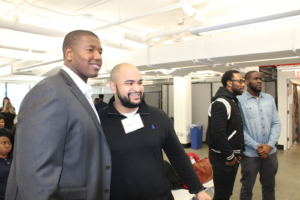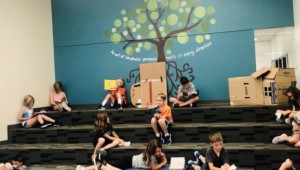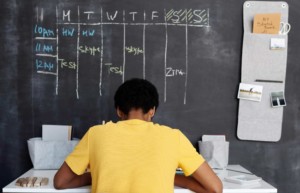How to Find Your Teacher Next Door

By Kenny Hall
When I started teaching more than twenty years ago, I remember hearing the quote, “Great teachers aren’t born; they are created by the teacher next door.” This idea has stuck with me, and it’s one of the reasons I still consider myself the lead learner in my classroom.
As a teacher, it is my responsibility to keep up with research and best practices to continually enhance learning for all of my students. And thanks to technology, the idea of “next door” is taking on a whole new meaning.
I found my “teachers next door” in my Professional Learning Network (PLN). A teacher’s PLN is made up of educators and resources to help them continue learning. A PLN traditionally includes educators at your site or in your district, but with the power of technology, it can also include teachers from all around the world. My PLN is no longer just made up of participants from the professional development sessions and conferences I attend in person – it also includes online connections from Twitter chats, Facebook groups, webinars and online classes.
Finding Your Community
My PLN journey began in October 2013, when I was looking for ways to continue to learn and I wanted to leverage technology. I stumbled across a free online course, “Twitter for Educators,” and created a Twitter handle to use just for education purposes. Before long, I was following some of my favorite professional authors and researchers, and then I began taking part in a few Twitter chats.
I was able to meet other educators from around the world with similar successes or problems in education – not to mention teachers with totally different experiences than mine. The Twitter chats allowed me to share my thoughts and learn from others. They also led to more opportunities to be part of various teacher groups — and even become involved with the amazing work being done by companies like ClassDojo and Amazon Education, where I got to participate in beta testing and give overall feedback on what I thought would be most useful for the classroom.
This year, one of my goals is to further my understanding of growth mindset – the belief that intelligence is something that can grow and develop, rather than something that is fixed. I have used my PLN to learn about growth mindset by chatting with teachers during #dojochat, #dojochateu and #edumindset Twitter chats. I’ve learned about how teachers bringing growth mindset ideas into their classrooms around the world. I was also introduced to the ClassDojo Big Ideas videos (which my students love).
Getting Started
So where do you begin? It can feel overwhelming at first, so here are my top tips for getting started:
- Start small. Pick one tool like Twitter, and use an online tutorial to get you started.
- Join a Twitter chat. These may cover a particular tool, a topic area, or a pedagogical approach. Some of my favorites are #dojochat, #mathmindset, #fpliteracy, #good2great.
- Find leaders to follow. If you have a favorite author or read something online that you really like, follow the person that posted.
- Keep in contact. Engage with influencers on topics you find interesting, and see who they are following to add to your list as well.
As your connections grow, so will your PLN. Now you are in charge of your learning! What’s more powerful than that?
My teaching has improved greatly as a result of my PLN, and I believe that developing PLNs is the number one way to improve as an educator. After all, we know that even though we are called teachers, we still are learners, too! And thanks to technology, we can find the teacher next door just about anywhere in the world – and hopefully be someone else’s teacher next door, too.
For more, see:
- First STEPs on Rethinking Student Teacher Placement and Training
- New Teacher Induction Approach Blends Virtual Content and Collaboration
- Four Key Ingredients For The Teacher PD Revolution
Kenneth Hall is currently a kindergarten teacher and an intervention teacher at Chapman Heights Elementary in Yucaipa, CA. Follow him on Twitter: @Kennygarten
Stay in-the-know with all things EdTech and innovations in learning by signing up to receive the weekly Smart Update. This post includes mentions of a Getting Smart partner. For a full list of partners, affiliate organizations and all other disclosures please see our Partner page.







0 Comments
Leave a Comment
Your email address will not be published. All fields are required.